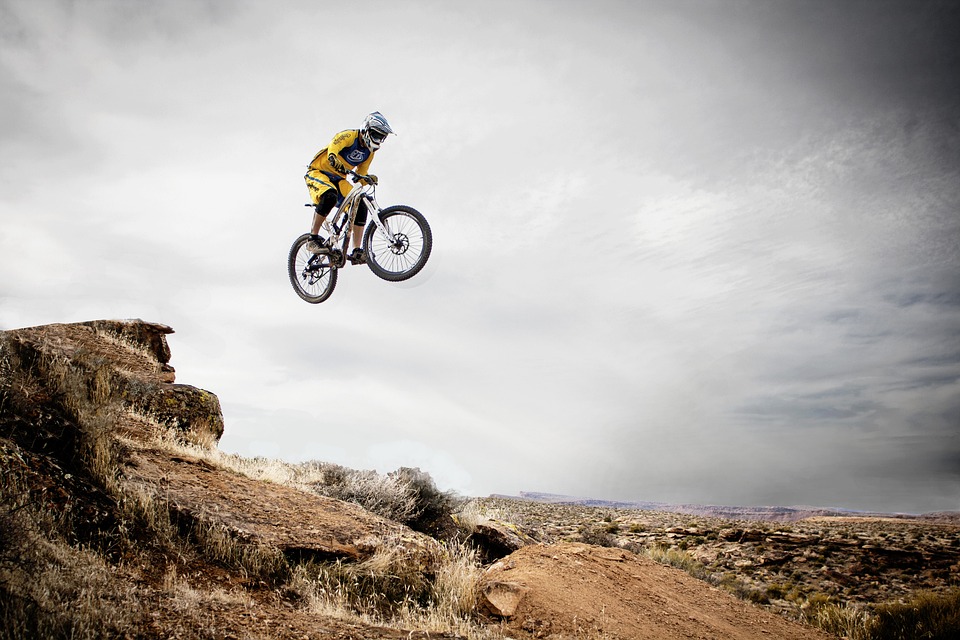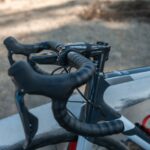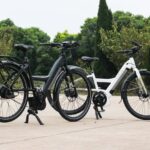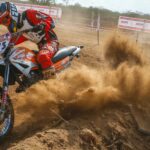Mastering the Brakes on Your Riverside 500 Hybrid Bike: A Comprehensive Guide
The Riverside 500 Hybrid bike, with its 700c wheels, is designed for a versatile riding experience, from leisurely commutes to weekend adventures.1 However, safe and efficient braking is paramount for any cyclist. This guide will equip you with the knowledge and techniques to confidently control your Riverside 500 in various riding scenarios.
Understanding Your Brakes:
The Riverside 500 likely features a combination of brakes:
- Mechanical Disc Brakes: These offer superior stopping power in all weather conditions compared to rim brakes.2 They are typically operated by levers on the handlebars, which actuate calipers that squeeze brake pads against a rotor mounted on the wheel hub.3
- V-brakes or Cantilever Brakes: (Less likely on newer models) These are rim brakes that use levers to squeeze two arms together, forcing brake pads against the sides of the wheel rim.
Braking Techniques:
- Smooth and Progressive Application: Avoid sudden, hard braking. This can lock up the wheels, leading to loss of control and a potential fall.4 Instead, apply pressure gradually and smoothly to the brake levers.
- Front and Rear Brake Coordination:
- Front Brake: Provides the majority of stopping power.
- Rear Brake: Helps stabilize the bike and prevent a skid during hard braking.
- Proper Technique: Apply both brakes simultaneously, but prioritize smooth application of the front brake.
- Weight Distribution: Shift your weight slightly backwards during hard braking to prevent a “wheelie” (front wheel lifting off the ground).
- Braking in Corners: Reduce speed before entering the corner and avoid heavy braking while leaned over. Gentle braking with the rear brake can help stabilize the bike.
Braking in Different Conditions:
- Wet Conditions:
- Be extra cautious as braking distances increase significantly on wet surfaces.
- Apply brakes smoothly and progressively to avoid wheel lockup.
- Consider using the rear brake more heavily in wet conditions to prevent a skid.
- Descents:
- Use lower gears to reduce speed and rely on engine braking.
- Apply brakes gradually and smoothly to control your speed.
- Avoid prolonged periods of heavy braking, which can overheat the brakes.5
- Emergencies:
- If faced with an emergency situation, apply both brakes firmly but progressively.
- Shift your weight back and be prepared to brace for impact.
Brake Maintenance:
- Regular Inspections:
- Check brake pads for wear and tear. Replace them when they are worn down to the wear indicators.
- Inspect brake rotors for damage or excessive wear.
- Ensure brake levers are properly adjusted and operate smoothly.
- Cleaning:
- Keep the brake rotors and pads clean to ensure optimal performance.
- Use a dedicated brake cleaner to remove dirt and grime.
- Cable Adjustment:
- If you notice any issues with brake performance, check and adjust the brake cables.
Advanced Braking Techniques:
- Trail Braking:
- A technique used on descents to help maintain stability and control.
- Apply light, consistent pressure to the brakes while entering and navigating corners.
- Pumping the Brakes:
- A technique for maximizing braking power on long descents.
- Rapidly and repeatedly apply and release the brakes to avoid overheating them.
Safety Considerations:
- Always wear a helmet.
- Be aware of your surroundings and other road users.
- Signal your intentions clearly before braking.
- Maintain proper tire pressure for optimal braking performance.
- Practice braking techniques in a safe and controlled environment.
Conclusion:
Mastering the brakes on your Riverside 500 Hybrid bike is crucial for safe and confident cycling. By understanding the principles of braking, practicing proper techniques, and performing regular maintenance, you can ensure a smooth and enjoyable riding experience. Remember that smooth and progressive braking is key, and always prioritize safety.
Disclaimer: This article provides general information and guidance. Always refer to your bike’s owner’s manual and consult with a qualified bicycle mechanic for specific maintenance and repair procedures.
Additional Tips:
- Brake Upgrades: Consider upgrading to hydraulic disc brakes for improved stopping power and modulation.
- Brake Lever Upgrades: Upgrade to ergonomic brake levers for improved comfort and control.
- Brake Rotor Upgrades: Consider upgrading to larger or higher-quality brake rotors for improved heat dissipation and performance.
By incorporating these tips and techniques into your riding, you can become a more confident and skilled cyclist, ensuring a safe and enjoyable experience on your Riverside 500 Hybrid bike.
Note: This article is for informational purposes only and should not be considered professional advice. Always consult with a qualified6 bicycle mechanic for any bike-related issues.
Keywords: Riverside 500, Hybrid Bike, 700c, Brakes, Disc Brakes, V-brakes, Braking Techniques, Safety, Maintenance, Upgrades.










